 Technology peripherals
Technology peripherals
 AI
AI
 Make 3D editing as easy as PS, the new algorithm GaussianEditor can complete the addition, deletion and modification of 3D scenes in a few minutes
Make 3D editing as easy as PS, the new algorithm GaussianEditor can complete the addition, deletion and modification of 3D scenes in a few minutes
Make 3D editing as easy as PS, the new algorithm GaussianEditor can complete the addition, deletion and modification of 3D scenes in a few minutes
3D editing plays a vital role in fields such as games and virtual reality. However, previous 3D editing suffered from problems such as long time consumption and poor controllability, making it difficult to apply to actual scenes. Recently, Nanyang Technological University, Tsinghua University and SenseTime proposed a new 3D editing algorithm, GaussianEditor, which for the first time achieved controllable and diversified editing of 3D scenes in 2-7 minutes, completely surpassing previous 3D editing work.
In recent years, research in the field of 3D editing has generally focused on neural radiation fields (NeRF). This is because NeRF can not only perform 3D scene modeling with a high degree of fidelity, but its implicit characteristics greatly improve scalability, which has significant advantages over traditional point cloud and mesh methods. However, NeRF relies on high-dimensional multi-layer perceptron networks (MLP) to encode scene data, which also brings certain limitations. It makes it difficult to directly modify specific parts of a scene and increases the complexity of tasks such as image restoration and scene composition. This complexity not only affects the training process, but also limits its use in practical applications.
GaussianEditor In order to solve the above problems, we took a new approach and chose Gaussian sputtering as the Its 3D representation. Gaussian Splatting is a new type of 3D representation proposed half a year ago. This representation has surpassed NeRF in many 3D tasks such as 3D and 4D reconstruction. It has attracted widespread attention in the 3D field as soon as it was launched and is one of the biggest breakthroughs in the 3D field this year. one. Gaussian Splatting has excellent prospects and potential, and GaussianEditor is the first to implement editing of this 3D representation. The project is open source and provides a WebUI interface for easy learning and use.

- ##Paper address: https://arxiv.org/abs/2311.14521
- Home page address: https://buaacyw.github.io/gaussian-editor/
Although Gaussian Splatting has an efficient rendering algorithm, it is used as a display representation Editing presents quite a few challenges. A major problem is the lack of efficient methods to accurately identify editing targets, which is crucial for precise and controllable editing. Furthermore, it has been shown that there are significant challenges in optimizing Gaussian spraying (GS) using highly stochastic generative guidance, such as generative diffusion models such as Stable Diffusion. This may be because GS is directly affected by the randomness in the loss, unlike the implicit representation of neural network buffering. This direct exposure leads to unstable updates and the properties of Gaussian points change directly during training. In addition, each training step of GS may involve the updating of a large number of Gaussian points, and this process does not have a neural network-style buffering mechanism. These problems will cause the excessive fluidity of GS to hinder its convergence to as fine a result as the implicit representation during training.
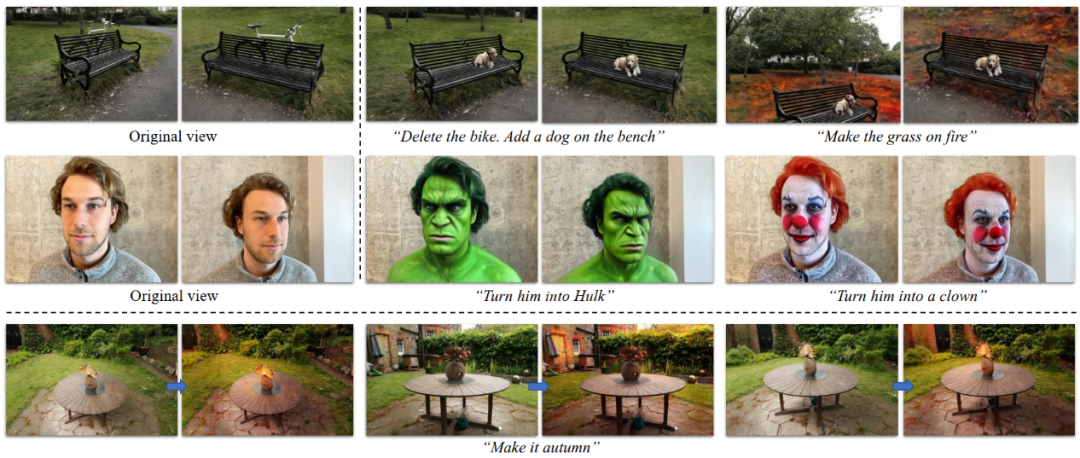
In order to solve the above problems, The team first introduced Gaussian semantic tracking to achieve precise control of Gaussian Splatting (GS). Gaussian semantic tracking can always identify Gaussian points that need to be edited during the training process. This differs from traditional 3D editing methods, which often rely on static 2D or 3D masks. As the geometry and appearance of the 3D model changes during training, these masks gradually become ineffective. Gaussian semantic tracking achieves tracking throughout the training process by projecting 2D segmentation masks onto 3D Gaussian points and assigning semantic labels to each Gaussian point. As the Gaussian points change during training, these semantic labels enable tracking of specific target Gaussian points. Gaussian semantic tracking algorithm ensures that only target areas are modified, enabling precise and controlled editing.
The red area in the figure below is the tracked target area. The semantic tracking area will be dynamically updated with the training process to ensure its effectiveness.

In addition, in order to deal with the major challenge of Gaussian Sputtering (GS) being difficult to achieve fine results when it is highly randomly generated, GaussinEditor adopts a new GS representation: hierarchical Gaussian sputtering (Hierarchical Gaussian Splatting, HGS). In HGS, Gaussian points are organized into different generations based on their densification order during training. Gaussian points formed during earlier densification processes are considered older generations, and they are subject to tighter constraints with the aim of maintaining their original state and reducing their mobility. In contrast, Gaussian points formed in later stages are treated as younger generations subject to fewer or no constraints to improve their fitness. The design of HGS effectively regulates the mobility of GS by imposing restrictions on older generations while maintaining the flexibility of newer generations. This approach makes possible continuous optimization towards better results, simulating the buffering function in implicit representations implemented through neural networks
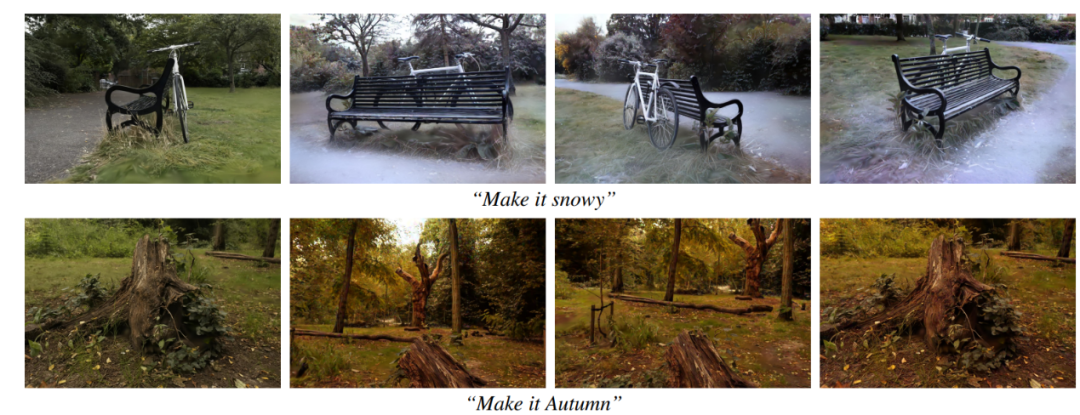
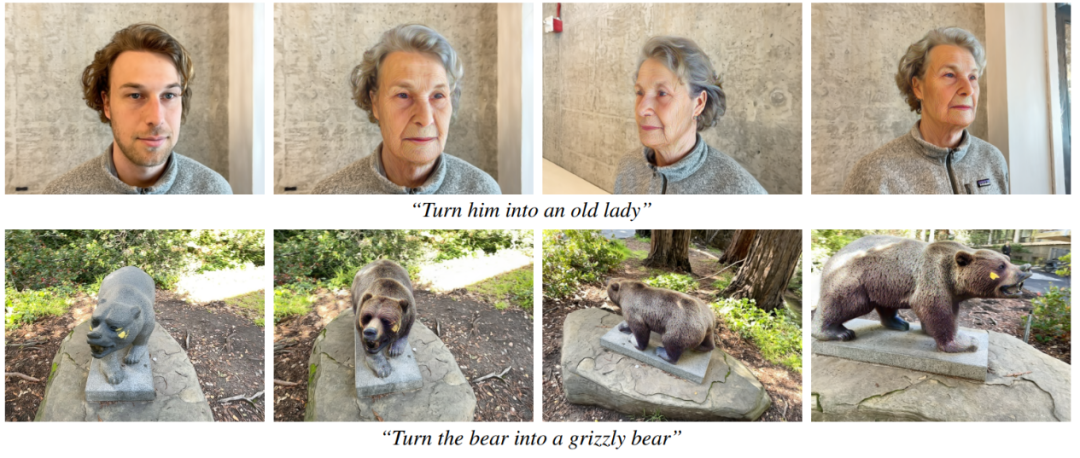
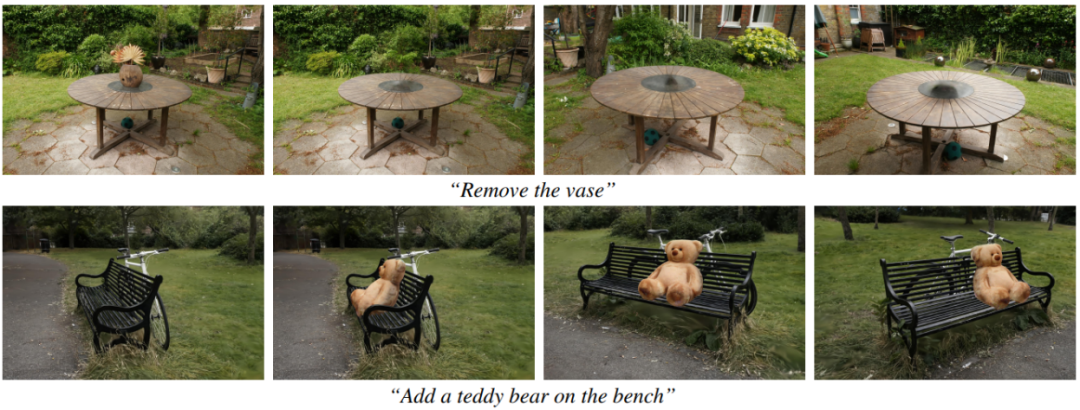
GaussianEditor proposed the addition and deletion algorithm of Gaussian sputtering representation on this basis. In terms of target deletion, the team developed a specialized local repair algorithm that effectively eliminates artifacts at the interface between the object and the scene. In terms of adding targets, GaussianEditor can add specified targets to specified areas based on a text prompt and 2D mask provided by the user. GaussianEditor first generates a single-view image of the object to be added with the help of the 2D Image Inpainting algorithm. This image is then converted into a 3D GS using the Image to 3D algorithm. Finally, the target is incorporated into the Gaussian scene.
In comparative experiments, GaussianEditor significantly surpassed previous work in terms of visual quality, quantitative indicators, controllability and generation speed
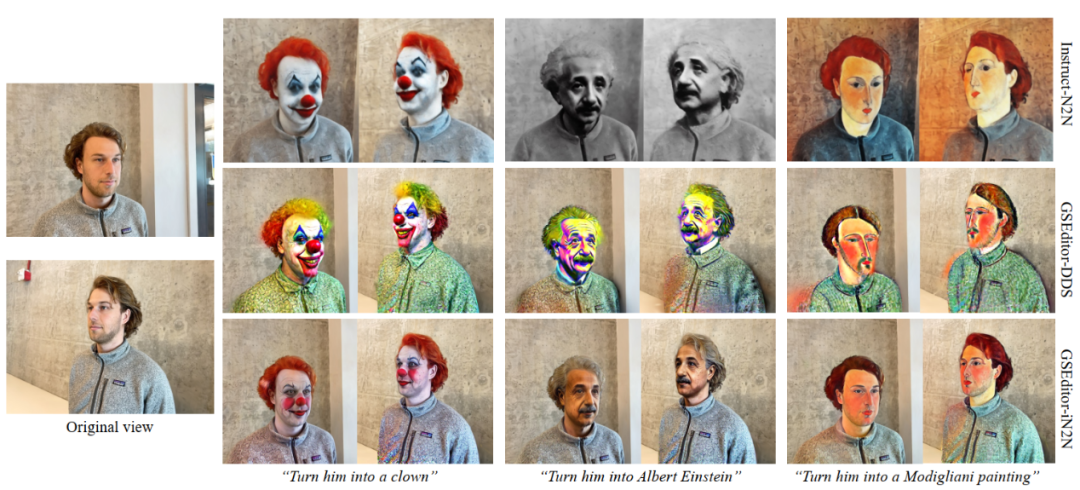

#The team also verified the effectiveness of their proposed Gaussian semantic tracking and hierarchical Gaussian representation through ablation experiments
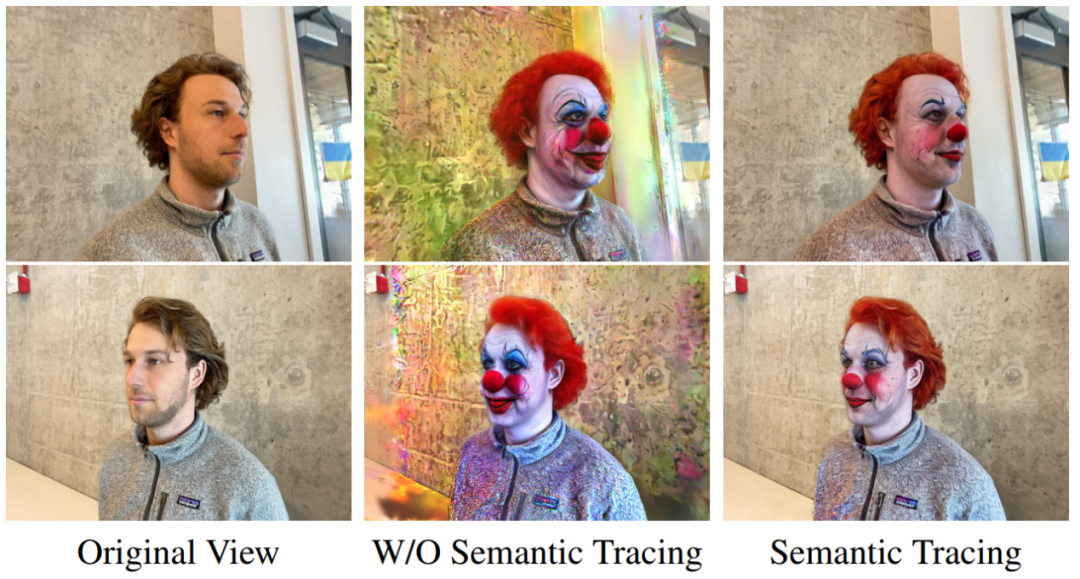
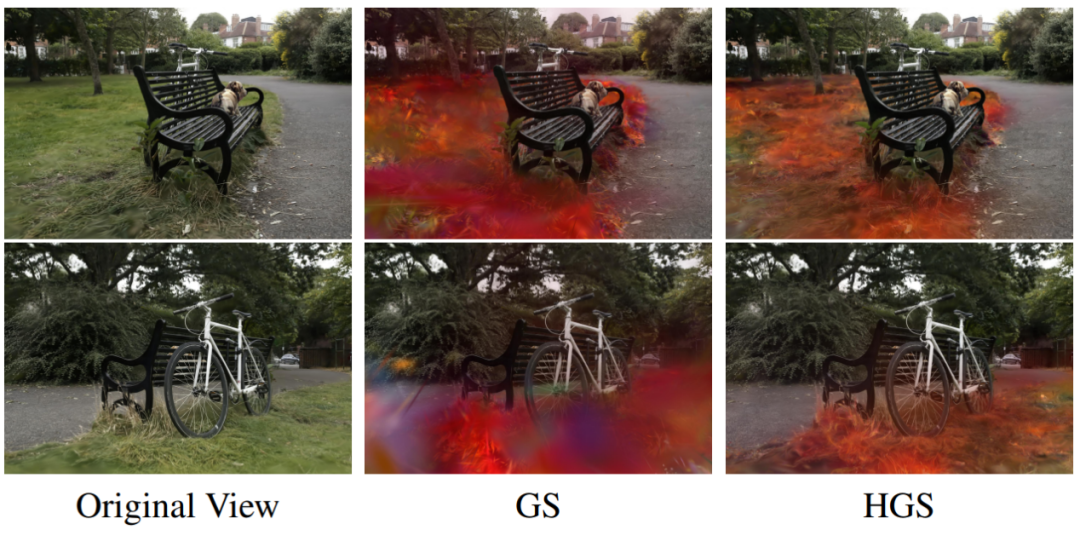
GaussianEditor As an advanced 3D editing algorithm, the focus is on editing 3D scenes flexibly and quickly, and Editing of Gaussian sputtering is implemented for the first time.
The key features of the algorithm include:
- Gaussian Semantic Tracking: It can continuously identify Gaussian points that need to be edited during the training process, ensuring that only the target area is edited.
- Hierarchical Gaussian Splatting (HGS) : This is a new GS representation, through Gaussian formed in different training stages A hierarchy is established between the points to effectively manage the fluidity of the GS scene and simulate the buffering function of the neural network in the implicit representation.
- 3D scene addition and deletion algorithm: GaussianEditor has specially developed and designed a 3D scene addition and deletion algorithm for GS, which can efficiently remove scenes from scenes. Remove or add specific objects.
The above is the detailed content of Make 3D editing as easy as PS, the new algorithm GaussianEditor can complete the addition, deletion and modification of 3D scenes in a few minutes. For more information, please follow other related articles on the PHP Chinese website!

Hot AI Tools

Undresser.AI Undress
AI-powered app for creating realistic nude photos

AI Clothes Remover
Online AI tool for removing clothes from photos.

Undress AI Tool
Undress images for free

Clothoff.io
AI clothes remover

AI Hentai Generator
Generate AI Hentai for free.

Hot Article

Hot Tools

Notepad++7.3.1
Easy-to-use and free code editor

SublimeText3 Chinese version
Chinese version, very easy to use

Zend Studio 13.0.1
Powerful PHP integrated development environment

Dreamweaver CS6
Visual web development tools

SublimeText3 Mac version
God-level code editing software (SublimeText3)

Hot Topics
 Use ddrescue to recover data on Linux
Mar 20, 2024 pm 01:37 PM
Use ddrescue to recover data on Linux
Mar 20, 2024 pm 01:37 PM
DDREASE is a tool for recovering data from file or block devices such as hard drives, SSDs, RAM disks, CDs, DVDs and USB storage devices. It copies data from one block device to another, leaving corrupted data blocks behind and moving only good data blocks. ddreasue is a powerful recovery tool that is fully automated as it does not require any interference during recovery operations. Additionally, thanks to the ddasue map file, it can be stopped and resumed at any time. Other key features of DDREASE are as follows: It does not overwrite recovered data but fills the gaps in case of iterative recovery. However, it can be truncated if the tool is instructed to do so explicitly. Recover data from multiple files or blocks to a single
 Open source! Beyond ZoeDepth! DepthFM: Fast and accurate monocular depth estimation!
Apr 03, 2024 pm 12:04 PM
Open source! Beyond ZoeDepth! DepthFM: Fast and accurate monocular depth estimation!
Apr 03, 2024 pm 12:04 PM
0.What does this article do? We propose DepthFM: a versatile and fast state-of-the-art generative monocular depth estimation model. In addition to traditional depth estimation tasks, DepthFM also demonstrates state-of-the-art capabilities in downstream tasks such as depth inpainting. DepthFM is efficient and can synthesize depth maps within a few inference steps. Let’s read about this work together ~ 1. Paper information title: DepthFM: FastMonocularDepthEstimationwithFlowMatching Author: MingGui, JohannesS.Fischer, UlrichPrestel, PingchuanMa, Dmytr
 Hello, electric Atlas! Boston Dynamics robot comes back to life, 180-degree weird moves scare Musk
Apr 18, 2024 pm 07:58 PM
Hello, electric Atlas! Boston Dynamics robot comes back to life, 180-degree weird moves scare Musk
Apr 18, 2024 pm 07:58 PM
Boston Dynamics Atlas officially enters the era of electric robots! Yesterday, the hydraulic Atlas just "tearfully" withdrew from the stage of history. Today, Boston Dynamics announced that the electric Atlas is on the job. It seems that in the field of commercial humanoid robots, Boston Dynamics is determined to compete with Tesla. After the new video was released, it had already been viewed by more than one million people in just ten hours. The old people leave and new roles appear. This is a historical necessity. There is no doubt that this year is the explosive year of humanoid robots. Netizens commented: The advancement of robots has made this year's opening ceremony look like a human, and the degree of freedom is far greater than that of humans. But is this really not a horror movie? At the beginning of the video, Atlas is lying calmly on the ground, seemingly on his back. What follows is jaw-dropping
 Google is ecstatic: JAX performance surpasses Pytorch and TensorFlow! It may become the fastest choice for GPU inference training
Apr 01, 2024 pm 07:46 PM
Google is ecstatic: JAX performance surpasses Pytorch and TensorFlow! It may become the fastest choice for GPU inference training
Apr 01, 2024 pm 07:46 PM
The performance of JAX, promoted by Google, has surpassed that of Pytorch and TensorFlow in recent benchmark tests, ranking first in 7 indicators. And the test was not done on the TPU with the best JAX performance. Although among developers, Pytorch is still more popular than Tensorflow. But in the future, perhaps more large models will be trained and run based on the JAX platform. Models Recently, the Keras team benchmarked three backends (TensorFlow, JAX, PyTorch) with the native PyTorch implementation and Keras2 with TensorFlow. First, they select a set of mainstream
 The vitality of super intelligence awakens! But with the arrival of self-updating AI, mothers no longer have to worry about data bottlenecks
Apr 29, 2024 pm 06:55 PM
The vitality of super intelligence awakens! But with the arrival of self-updating AI, mothers no longer have to worry about data bottlenecks
Apr 29, 2024 pm 06:55 PM
I cry to death. The world is madly building big models. The data on the Internet is not enough. It is not enough at all. The training model looks like "The Hunger Games", and AI researchers around the world are worrying about how to feed these data voracious eaters. This problem is particularly prominent in multi-modal tasks. At a time when nothing could be done, a start-up team from the Department of Renmin University of China used its own new model to become the first in China to make "model-generated data feed itself" a reality. Moreover, it is a two-pronged approach on the understanding side and the generation side. Both sides can generate high-quality, multi-modal new data and provide data feedback to the model itself. What is a model? Awaker 1.0, a large multi-modal model that just appeared on the Zhongguancun Forum. Who is the team? Sophon engine. Founded by Gao Yizhao, a doctoral student at Renmin University’s Hillhouse School of Artificial Intelligence.
 Slow Cellular Data Internet Speeds on iPhone: Fixes
May 03, 2024 pm 09:01 PM
Slow Cellular Data Internet Speeds on iPhone: Fixes
May 03, 2024 pm 09:01 PM
Facing lag, slow mobile data connection on iPhone? Typically, the strength of cellular internet on your phone depends on several factors such as region, cellular network type, roaming type, etc. There are some things you can do to get a faster, more reliable cellular Internet connection. Fix 1 – Force Restart iPhone Sometimes, force restarting your device just resets a lot of things, including the cellular connection. Step 1 – Just press the volume up key once and release. Next, press the Volume Down key and release it again. Step 2 – The next part of the process is to hold the button on the right side. Let the iPhone finish restarting. Enable cellular data and check network speed. Check again Fix 2 – Change data mode While 5G offers better network speeds, it works better when the signal is weaker
 Kuaishou version of Sora 'Ke Ling' is open for testing: generates over 120s video, understands physics better, and can accurately model complex movements
Jun 11, 2024 am 09:51 AM
Kuaishou version of Sora 'Ke Ling' is open for testing: generates over 120s video, understands physics better, and can accurately model complex movements
Jun 11, 2024 am 09:51 AM
What? Is Zootopia brought into reality by domestic AI? Exposed together with the video is a new large-scale domestic video generation model called "Keling". Sora uses a similar technical route and combines a number of self-developed technological innovations to produce videos that not only have large and reasonable movements, but also simulate the characteristics of the physical world and have strong conceptual combination capabilities and imagination. According to the data, Keling supports the generation of ultra-long videos of up to 2 minutes at 30fps, with resolutions up to 1080p, and supports multiple aspect ratios. Another important point is that Keling is not a demo or video result demonstration released by the laboratory, but a product-level application launched by Kuaishou, a leading player in the short video field. Moreover, the main focus is to be pragmatic, not to write blank checks, and to go online as soon as it is released. The large model of Ke Ling is already available in Kuaiying.
 The U.S. Air Force showcases its first AI fighter jet with high profile! The minister personally conducted the test drive without interfering during the whole process, and 100,000 lines of code were tested for 21 times.
May 07, 2024 pm 05:00 PM
The U.S. Air Force showcases its first AI fighter jet with high profile! The minister personally conducted the test drive without interfering during the whole process, and 100,000 lines of code were tested for 21 times.
May 07, 2024 pm 05:00 PM
Recently, the military circle has been overwhelmed by the news: US military fighter jets can now complete fully automatic air combat using AI. Yes, just recently, the US military’s AI fighter jet was made public for the first time and the mystery was unveiled. The full name of this fighter is the Variable Stability Simulator Test Aircraft (VISTA). It was personally flown by the Secretary of the US Air Force to simulate a one-on-one air battle. On May 2, U.S. Air Force Secretary Frank Kendall took off in an X-62AVISTA at Edwards Air Force Base. Note that during the one-hour flight, all flight actions were completed autonomously by AI! Kendall said - "For the past few decades, we have been thinking about the unlimited potential of autonomous air-to-air combat, but it has always seemed out of reach." However now,





